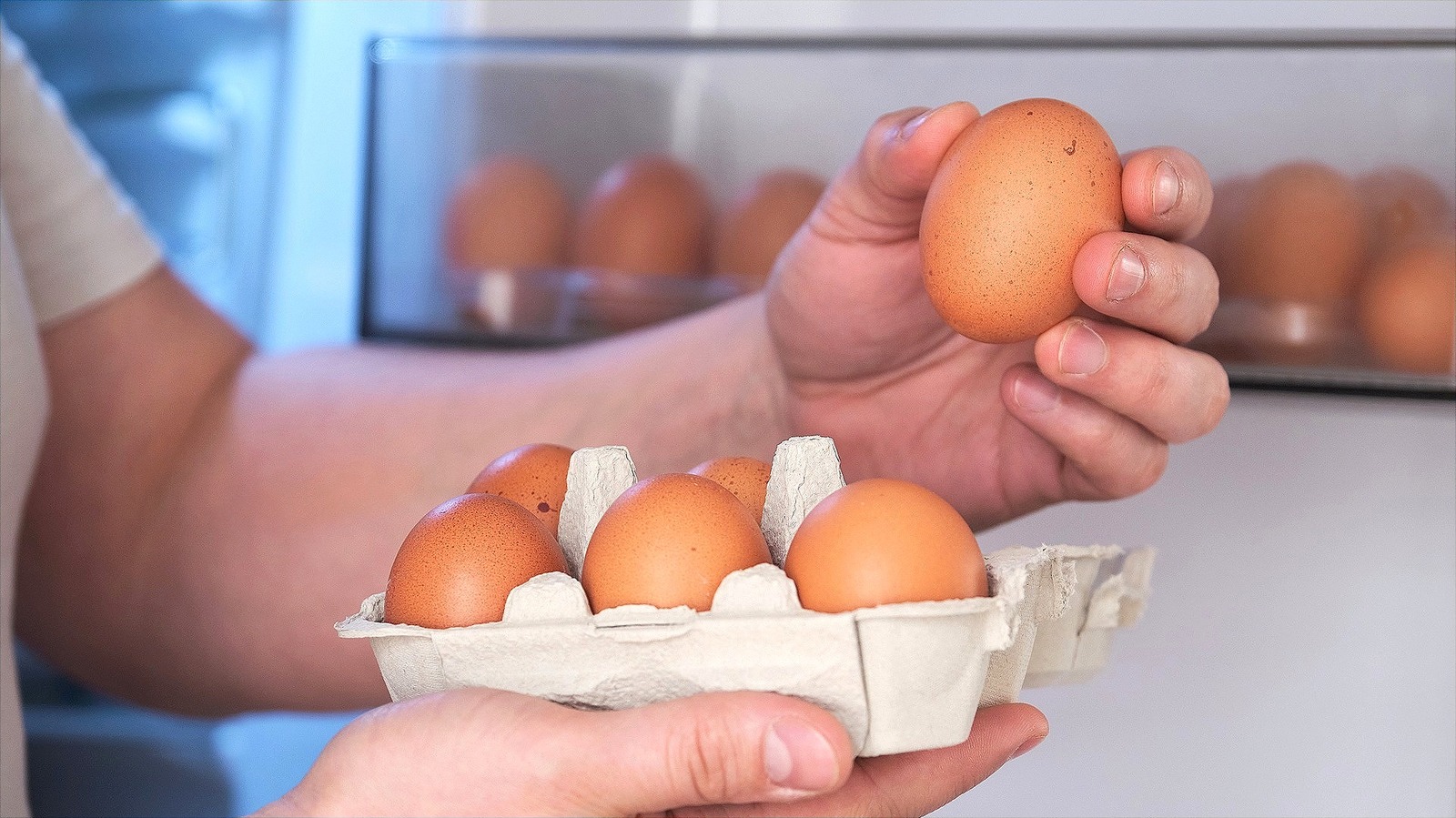Whether you’re planning to start your day with classic, buttery eggs Benedict or loaded breakfast sandwiches, fresh eggs are an essential component. Since the length of time eggs last in the refrigerator is between three and five weeks or the approximated sell-by date, determining a fresh egg from a spoiled egg can be a tricky process. If you’re looking for a way to test your latest batch of eggs but don’t want to trouble yourself with the use of special tools or gadgets, try the shake test.
Simply hold a raw egg up to your ear and give it a gentle shake. If you hear sloshing noises or detect back and forth movement, this could point to an egg that’s past the point of consumption. If the egg doesn’t make any sound, it’s likely still safe for eating. The idea behind this procedure has everything to do with an egg’s air cell which is behind the shell and surrounds the inner contents of the egg itself. As an egg ages, its air cell expands and the insides slowly begin to deteriorate and lose moisture. An older egg also has a thinner, more watery albumen which can affect the consistency of the egg yolk and alter the interior structure altogether. Surprisingly, you can hear these structural deficiencies when you shake an egg that’s older and potentially spoiled.
However, while this test is effective at detecting older eggs, not all eggs that have aged are unsafe to eat. Luckily, there are a few more methods you can use to recognize good versus bad eggs.
More convenient ways to identify spoiled eggs
Since the shake test can’t definitively detect spoiled eggs, you can use your other senses to catch signs of deterioration. For starters, make sure your eggs don’t have any visible cracks on the surface. If you detect any breaks or foul-smelling odors, discard your eggs immediately.
Another simple way to check if your eggs are old is to administer a float test. While this method requires a bowl or glass of water, it’s fairly simple to conduct. Upon gently placing an egg in water, watch and see if it floats or sinks. An older egg will float which, similar to the shake test, is a sign that the inside of the egg has begun to change shape and potentially deteriorate.
While both the float and shake test follow similar principles, failing these tests doesn’t always signify rotten or spoiled eggs. In most cases, older eggs are still perfectly safe to eat. For the most conclusive results, your best bet is to crack any egg in question in a small bowl and inspect it’s contents. If you’re dealing with a rotten egg, you’ll be able to smell it, and if there is no smell, it will oftentimes have off-colored whites and a broken, watery center. While the shake test may be a good first step, cracking your eggs before cooking is the only surefire way to tell if they are safe to eat.






